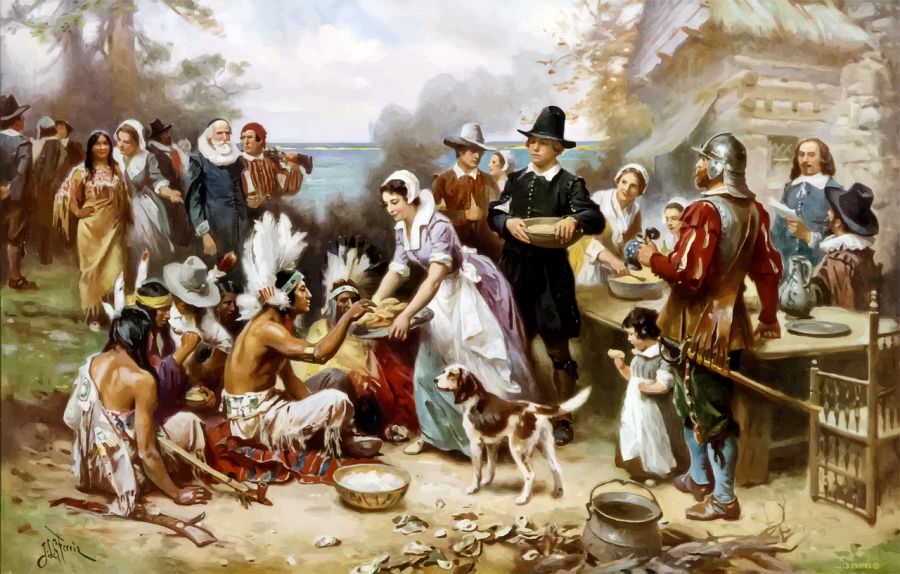- Beavers Digest / Cascades
- Beavers Digest / Cascades / Culture
- Beavers Digest / Culture
- Beavers Digest / Culture / Community
Digest your Thanksgiving history: a look back at a traditional American holiday
Painted by Jean Leon Gerome Ferris
Painted by Jean Leon Gerome Ferris, he was known for painting iconic depictions of periods throughout American history, with his Thanksgiving painting becoming one of his more well known works.
November 25, 2021
Thanksgiving may be viewed as the day of giving thanks; however, there’s a more complicated history regarding the holiday.
The Thanksgiving tradition of eating food can be seen as the celebration of the Pilgrims’ successful corn harvest in 1621 according to Pilgrim Hall Museum, an institution dedicated to preserving colonial history.
With the help of Native Americans, English settlers were able to successfully grow corn. The two groups coming together to feast because of this accomplishment is the narrative that many people have come to believe about Thanksgiving.
Although the tale is not wrong, it doesn’t account for the conflict and negative impacts that still affect Native Americans today.
“The Native group in the area were called Wampanoags,” according to Nicholas Foreman, instructor in the School of History, Philosophy and Religion at Oregon State University.
The Wampanoags and the English settlers were not on great terms, leading the false narrative that Thanksgiving was a friendly feast between the two groups and completely disregarding the destructive impacts on Native American land.
When colonists traveled over from Britain and settled on the east coast that was already occupied by Indigenous people, they spread diseases and illness that eliminated many Native Americans. This created the erasure of many of the Wampanoags, leaving them outnumbered and vulnerable to violence of the nearby Native people called the Narragansett.
In addition, Foreman said that the Wampanoags, “became entangled in King Philip’s War, which was one of the most disruptive and deadly conflicts in the history of Colonial America.”
In exchange for European weaponry to defend themselves against the Narragansett, the Wampanoags gave the Pilgrims food. This sparked the alliance that later on created the holiday called Thanksgiving.
Nonetheless, the history of colonialism and slavery should not be forgotten. As European slave trade was present before the Pilgrims traveled overseas, the point of the alliance was not to forgive all and forget all.
It is understandable that many Native Americans still feel uncomfortable with the holiday.
“In 1970, Wampanoag elder Frank James (Wamsutta) began a tradition of public protest against the myth of Thanksgiving by calling for a national day of mourning. His idea was that resisting this feel-good narrative was essential to highlight the ongoing injustices against Native people and their exclusion from American cultural narratives in the present and past alike,” Foreman said.
Thanksgiving has a complicated history that should not be forgotten, but should be respected and recognized. The past events have shaped what the United States is today, so sugar-coating negative history does not help in the reduction of discrimination and racism.
Officiating Thanksgiving as a national holiday was also quite a process.
“George Washington recommended a national day of thanksgiving in 1789, but it didn’t become anything official until 1863, when amidst stress over immigration, slavery and the actual breaking apart of the union via Civil War, Abraham Lincoln declared it a national holiday,” Foreman said.
Still, the surface level history of Thanksgiving that Americans know and love paved many traditions among families and their households.
Many Americans include a feast where turkey is the main course amongst other foods like pumpkin pie, potatoes and yams.
There is not a clear indication as to how eating turkey on Thanksgiving became a tradition, but a reason for this tradition may be because they, “were a part of New England’s foodways from the start, as they were common in the wild,” Foreman said.






